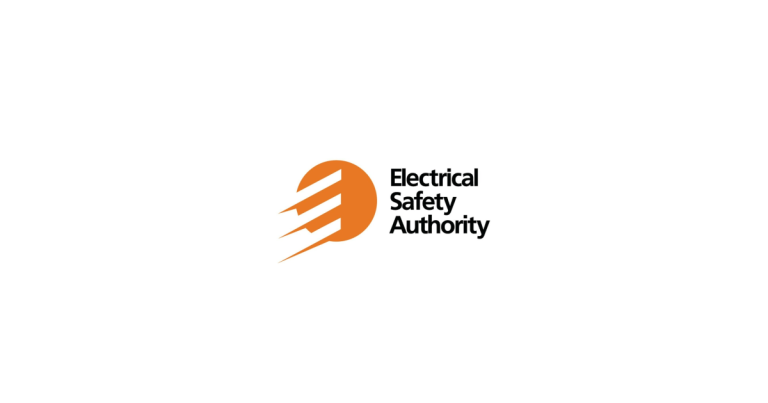Power Shifts: Emerging Low-Voltage Trends, Impacts and Opportunities, Part 1

June 19, 2017
In the previous issue of Electrical Industry Newsweek, we provided highlights from Electro-Federation Canada’s recently released research report, Power Shifts: Emerging Low-Voltage Trends, Impacts and Opportunities for the Canadian Electrical Channel. In this issue, the first in a 5-part series exploring specific aspects of the report and their implications for electrical contractors and other industry stakeholders.
The electrical industry is undergoing massive transformation as it enters a new era of technological change. The ways in which electrical products and systems operate are vastly changing as new advancements in technology arise. Concepts such as smart cities and net zero homes and buildings are driving new social responsibility behaviours among end users in the market. In turn, these behaviours are creating opportunities for new integrated power and control systems, and applications that are readily available, flexible, efficient, and more cost-effective than before.
Who’s driving the shift
This technology shift has led to an altered state of supply and demand in the electrical channel: end users are demanding smart, connected solutions, and new low-voltage direct current (LVDC) technologies and solutions are rising to meet these new demands.
In a recent Markets & Market report [1], Canada’s position on this trend is growing faster than the U.S. or Europe, in part due to legislation on carbon-footprint reduction. Market trailblazers are taking notice of this new trend and are beginning to pursue LVDC opportunities. You don’t have to go too far to hear about partnerships developing and businesses emerging that are offering new products and services. Those once considered “outside entities” to the electrical market are now establishing a solid footprint in our industry as they become complementary — or competitive — players.
Consider these developments:
• Cisco partners with electrical manufacturers to offer connected Power over Ethernet (PoE) solutions
• Armstrong Ceiling Solutions teams up with electrical manufacturers to install LVDC-powered ceiling-based integrated systems for lighting, sensors and controls and other digital devices
• Telcos expand their traditional utility role. For example, Verizon acquires a lighting controls company and Yahoo; HVAC contractors acquire electrical contractors
• System integrators make inroads into our industry by offering end-to-end solutions that connect a variety of disparate systems, such as power, communications, HVAC, security and fire, lighting and others
• Niche distributors specializing in electronics, renewable energy and low-voltage solutions are both emerging and evolving
These channel expansions have one thing in common: they are all giving rise to new business models and aim to offer connected solutions elements that were once outside their scope — and notably, are well within the electrical domain. For example, the IT channel is now active with LVDC integration. For IT specialists, datacomm is a known platform, but new power supply demands are not.
Why low-voltage DC (LVDC)
Today, we generate electricity as direct current (DC) and then convert it to alternating current (AC), before supplying it to end users. This is sensible when you consider that the bulk of the loads that consume this power have historically been AC motors. However, in recent years, the rapid growth of DC‐run digital equipment has led to a situation where we generate power in DC, convert it to AC for delivery, and then convert it back to DC at discrete points of use such as computers, media equipment, variable-speed drives and electronic lighting. This double conversion consumes up to 30% in energy losses[2]. Such inefficiencies are enough to hold back the adoption of renewable energy elements like photovoltaics, power storage solutions like lithium ion batteries, and similarly affect controls, sensors and LED lighting by slowing payback. To address this conversion barrier, interest in DC power supply has increased, as has interest in LVDC, specifically. The primary focus of this report is on the key trends that are leading the adoption of LVDC systems.
Outlook and opportunities for the Canadian electrical channel
The race is on. As end users continue driving the demand for connected, plug-and-play solutions that offer comfort, convenience and personalization—both at home and at work—the electrical industry will need to step up its game to meet market demands, or lose out on emerging opportunities to other solution providers, system integrators, electronics, IT and other niche distributors, datacomm specialists and others. These external players are gaining insight on the significant potential of integrated systems using low-voltage power, such as LVDC, Distributed Low Voltage Power (DLVP) and PoE. Given the low voltage, low-risk nature of these systems, many non-electrical parties are entering this space and offering services and solutions to end users at a growing rate.
The outlook for low-voltage DC powered systems is promising, especially when you consider all of the activities already at play today:
• manufacturers are steadily introducing new lines of products and devices that configure with low-voltage DC power u Renewable energy and battery storage are lining up to supply new in-house DC microgrids to fuel the DC-powered devices
• installations of LED fixtures, sensors, and controls that run over PoE and DLVP systems are gaining strong traction
• regulators and standards organizations are updating current codes to account for new technical capabilities and emerging power and datacomm requirements for new applications
With these emerging developments in motion, the future of LVDC is clearly upon us. At a recent International Electrotechnical Commission (IEC) General Meeting in Germany, the focus was on Low-voltage DC — future or already present?. Vimal Mahendru, President of Legrand‐India and Convenor for IEC’s System Evaluation Group (SEG), stated that given the recent adoptions in IoT, PoE and Smart homes: EFC asked participants at its LVDC Industry Summit in March 2017 to share insights on when their company expects to offer LVDC technology and services to customers. Of those surveyed, close to half indicated they already offer this to customers. Another 22% have plans in development and will offer this within a year.
This is another indication that the outlook for emerging LVDC powered systems is optimistic and electrical channel players should consider the opportunities that arise from this technology as they build out their strategies.
Opportunities
The topic of LVDC systems is very broad. EFC collaborated with Market Research Committee members and summit participants to gauge the scope of this topic and to determine key areas of importance. During the summit, participants were split into three groups and were tasked with identifying top opportunities that will result in the biggest changes in the electrical industry. Each of the groups started with the same list of nine areas of potential opportunity, and were given the chance to add more topics. Each team narrowed the list down to three key areas they believed will have the most impact on the electrical channel. Their selections are listed here, in ranked order:
1. sensors and controls (integrated systems, communications protocols)
2. Power over Ethernet (PoE)
3. renewables and battery storage
4. energy management, personalization of space
5. smart cities, net-zero buildings, social responsibility
These opportunities are explored in EFC’s Power Shifts report, with a focus on how each of these relate to emerging low voltage DC-powered systems.
In Power Shifts: Emerging Low-Voltage Trends, Impacts and Opportunities, Part 2: an end-to-end overview of low voltage, including DC power, low-voltage DC, Power over Ethernet, PoE partnerships, DC microgrids, and distributed low-voltage power.
Find out more about Power Shifts: Emerging Low-Voltage Trends, Impacts and Opportunities for the Canadian Electrical Channel: www.electrofed.com/market-research/.
Notes
1. “North America Low Voltage Industrial Controls Market worth 6.30 Billion USD by 2020”, Market and Markets report overview. Accessed April 2017: http://www.marketsandmarkets.com/PressReleases/north-america-low-voltage-industrial-controls.asp
2. “Slow Electricity: The Return of DC Power,” Low-Tech Magazine, April 2016. Accessed March 2017: http://www.lowtechmagazine.com/2016/04/slow-electricity-the-return-of-low-voltage-dc-power.html




![Guide to the Canadian Electrical Code, Part 1[i] – A Road Map: Section 52 — Diagnostic imaging installations](https://electricalindustry.ca/wp-content/uploads/2022/11/Guide-CE-Code-2-768x432.png)





![Guide to the Canadian Electrical Code, Part 1[i] – A Road Map: Section 52 — Diagnostic imaging installations](https://electricalindustry.ca/wp-content/uploads/2022/11/Guide-CE-Code-2.png)






